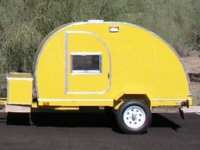I am putting the final plans on a roadtrip across the country in June (Washington to Maine) and I am hoping someone can answer some gas questions I have.
Two years ago on a trip, when we were in the midwest, Minnesota, Wisconsin, Illinois area with the '51 Chev, I stopped for gas and filled the tank with gas that evidently had a large percentage of alcohol mixed in it. I started to have a huge problem with vaporlocking. It was really fun when it quit on a bridge over the Mississippi in St Paul at rush hour. The young DOT hiway helper wanted to call a tow truck and I told him I would be back on the road before it got there. He also asked what kind of engine it was as he had never seen that kind before. I run a stock 235 6cyl in it.
It was bad in Iowa and Nebraska. A few times when I needed gas, a alcohol mix was all I could find. It started with low speeds (underhood heat buildup) and then it continued to cause problems at freeway speeds with good airflow. I have had the car in hotter weather before with no problems. I would coast to the side of the road and wrap icewater soaked rags around the gas lines and fuel pump to cool it down.

I want to avoid this picture again.
After about 20 minutes I could get back on the road. Finally after fighting it all day, we were going to a campground to end the day. The car quit on the way into the campground, I coasted to the office and registered then had to be towed, car and TD to the campsite. The fuel pump finally said enough and I put an electric fuel pump on to get to the ITG 1 and home. I did have a couple of hiccups with the electric one until I got into Washington then everything was fine.
So, besides watching the grade of fuel I put in the car, is there any additives that are available in the midwest for us older low pressure fuel systems that will help me avoid vapor locking? I already have a good supply of wooden closepins for clipping on the fuel lines lol.
Jack







